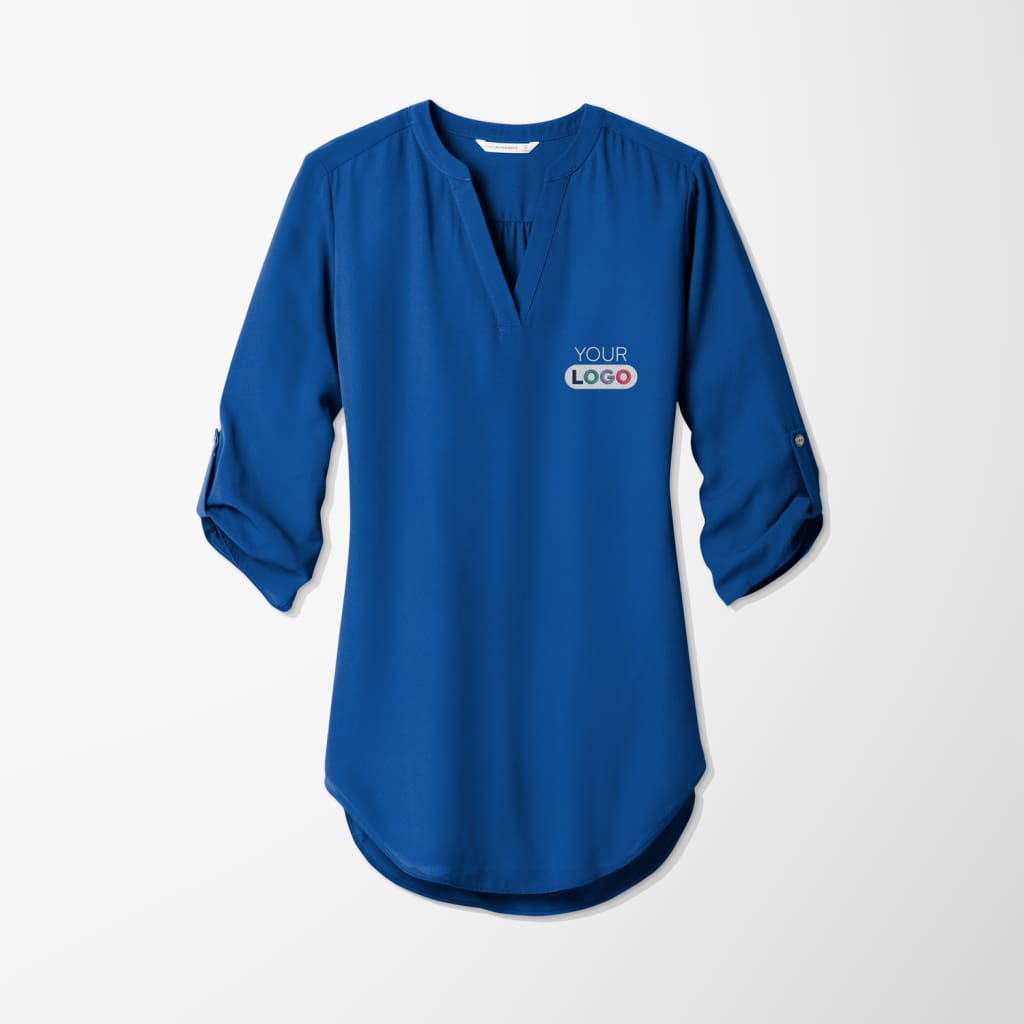The Role of Fabric in Defining Quality in Branded Clothing
The Role of Fabric in Defining Quality in Branded Clothing
Blog Article
Comprehending Garments: The Significance of Fabric Selections in Your Wardrobe
The choice of material in clothes plays a crucial role in both looks and capability. Various products provide varying degrees of longevity, breathability, and comfort, straight affecting the wearer's experience. Recognizing these nuances can boost one's wardrobe considerably. Lots of forget how these options can influence not simply personal style, however also sustainability. What material choices could redefine your closet and align it with both style and responsibility?
The Role of Fabric in Style and Capability

Usual Material Types and Their Qualities
When selecting garments, comprehending the attributes of common material kinds is crucial for making educated choices. Cotton, a widely-used natural fiber, is recognized for its breathability, softness, and versatility, making it ideal for informal wear and day-to-day garments. Linen, another all-natural choice, flaunts outstanding moisture-wicking residential properties and an unique appearance, perfect for cozy climates.Wool, typically preferred for its warmth and sturdiness, differs in fineness; merino wool is soft against the skin, while coarser kinds are utilized for outerwear. Synthetic fabrics like polyester and nylon use toughness and resistance to wrinkles, making them popular for activewear and traveling garments. Blends, which integrate synthetic and all-natural fibers, can improve capability while preserving convenience. By acknowledging these textile features, people can select clothing that lines up with their lifestyle and visual choices.
Breathability and Convenience: Picking the Right Fabrics for Different Climates
Picking the right fabrics for various climates can considerably enhance convenience and general wearability. Breathable products are essential in warm environments, as they permit air circulation and wetness evaporation. Fabrics such as cotton, bed linen, and moisture-wicking synthetics efficiently attract sweat away from the body, keeping the user cool and dry. On the other hand, in colder climates, thicker fabrics like woollen or fleece provide insulation while preserving breathability, making certain warmth without overheating.Additionally, the selection of material weight plays an important function; light-weight fabrics are more suitable for summer season, whereas much heavier alternatives are fit for winter season wear. Recognizing the unique homes of each textile enables individuals to clothe appropriately for differing weather condition conditions. Eventually, picking comfy and breathable textiles customized to particular climates can greatly improve daily convenience and improve the general experience of wearing apparel.
Resilience and Care: Just How Fabric Influences Durability of Your Wardrobe
Choosing the ideal materials can significantly influence the toughness and care needs of a wardrobe. Fabrics such as cotton and polyester are recognized for their durability and convenience of upkeep, making them ideal for daily wear. On the other hand, delicate products like silk and shoelace require more mindful handling and specialized cleaning approaches, which can boost the time and initiative needed for care. Branded Clothing.Durability is likewise influenced by the material's weave and surface; snugly woven fabrics often tend to resist wear and tear far better than loosely woven alternatives. Furthermore, artificial blends commonly give boosted toughness, integrating the very best qualities of numerous fibers.Understanding the care directions for each and every textile is important, as incorrect drying out or washing can lead to early wear. Ultimately, selecting sturdy products can bring about a longer-lasting closet, minimizing the frequency of substitutes and adding to a more lasting style option
The Influence of Textile on Fit and Silhouette

Lasting Textile Choices: Making Eco-Friendly Decisions
The impact of fabric extends past fit and shape to encompass environmental elements, motivating an expanding passion in lasting fabric selections. Environment-friendly textiles, such as organic cotton, hemp, and Tencel, are acquiring grip amongst consumers who focus on sustainability in their wardrobes. These advice products are commonly produced with fewer chemicals and water, minimizing their environmental footprint.Additionally, recycled textiles, made from post-consumer waste, provide an ingenious service to the fabric industry's pollution issue. Brands progressively accept transparency in their sourcing methods, allowing consumers to make educated decisions concerning their purchases.Choosing sustainable textiles not only supports moral techniques yet additionally motivates the garment industry to embrace more liable manufacturing techniques. As understanding of ecological issues climbs, people are urged to assess the lasting influence of their material selections, cultivating a movement in the direction of an extra sustainable and ecologically conscious technique to fashion.
Elevating Design: Exactly How Textile Can Change an Outfit
While lots of might Clicking Here concentrate on color and cut when choosing an outfit, the choice of textile plays a crucial role in boosting design and enhancing overall look. Various products share unique moods and messages; as an example, silk emanates high-end and sophistication, while jeans uses an informal, relaxed ambiance. The appearance and drape of a fabric can dramatically modify the shape, with organized materials offering a refined look and softer ones producing an extra fluid, loosened up aesthetic.Moreover, the weight of the textile influences wearability throughout periods. Lightweight fabrics like bed linen and cotton are ideal for summertime, while much heavier products such as wool and velvet offer warmth and elegance in colder months. Comprehending material residential or commercial properties, such as breathability and stretch, likewise equips individuals to make enlightened options that boost comfort without compromising style. Inevitably, the right fabric can change a clothing from ordinary to amazing, making it a vital factor to consider in any wardrobe.
Frequently Asked Concerns
Just how Do I Determine the Textile Material of My Garments?
To determine material material, one can analyze treatment labels, conduct melt tests for visit the site fiber recognition, or consult fabric swatches. These techniques help set apart products, guaranteeing informed options for apparel care and upkeep in everyday wear.
Can Textile Selection Affect My State Of Mind or Confidence?
Material option can substantially influence a person's mood and self-confidence. Branded Clothing. Particular materials may evoke feelings of convenience or style, while others can really feel unflattering or restrictive, ultimately affecting self-perception and psychological wellness throughout the day
What Fabrics Are Ideal for Delicate Skin?
For people with delicate skin, all-natural textiles like bamboo, bed linen, and cotton are often recommended. These materials are breathable, hypoallergenic, and much less most likely to trigger inflammation, making them suitable options for comfort and skin health and wellness.
How Do I Correctly Laundry and Treatment for Various Fabrics?
To correctly care and clean for various textiles, one should consider each material's details demands, consisting of temperature level setups, cleaning agents, and drying techniques, making sure durability and maintaining the textile's initial top qualities for suitable use.
Exist Specific Fabrics for Athletic or Performance Use?
Sports or performance wear frequently utilizes fabrics such as nylon, polyester, and spandex. These materials are created for moisture-wicking, breathability, and flexibility, boosting motion and convenience throughout physical activities while supplying longevity and assistance. On the other hand, in colder climates, thicker materials like wool or fleece give insulation while maintaining breathability, guaranteeing heat without overheating.Additionally, the option of textile weight plays a vital duty; light-weight materials are more effective for summer season, whereas heavier choices are matched for winter months wear. In comparison, delicate products like silk and shoelace require even more cautious handling and specialized cleaning techniques, which can increase the time and initiative required for care.Durability is also influenced by the textile's weave and finish; tightly woven materials tend to stand up to wear and tear better than loosely woven options. In comparison, inflexible materials can limit movement however provide a traditional, polished look.Moreover, the thickness and texture of the material can affect the aesthetic assumption of body shape. The influence of fabric expands beyond fit and silhouette to incorporate environmental variables, triggering a growing interest in lasting fabric choices. The structure and drape of a fabric can significantly change the shape, with organized materials giving a sleek appearance and softer ones developing an extra fluid, kicked back aesthetic.Moreover, the weight of the material affects wearability across seasons.
Report this page